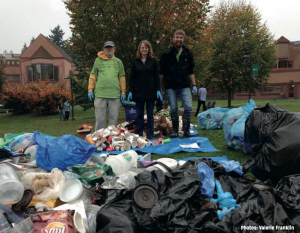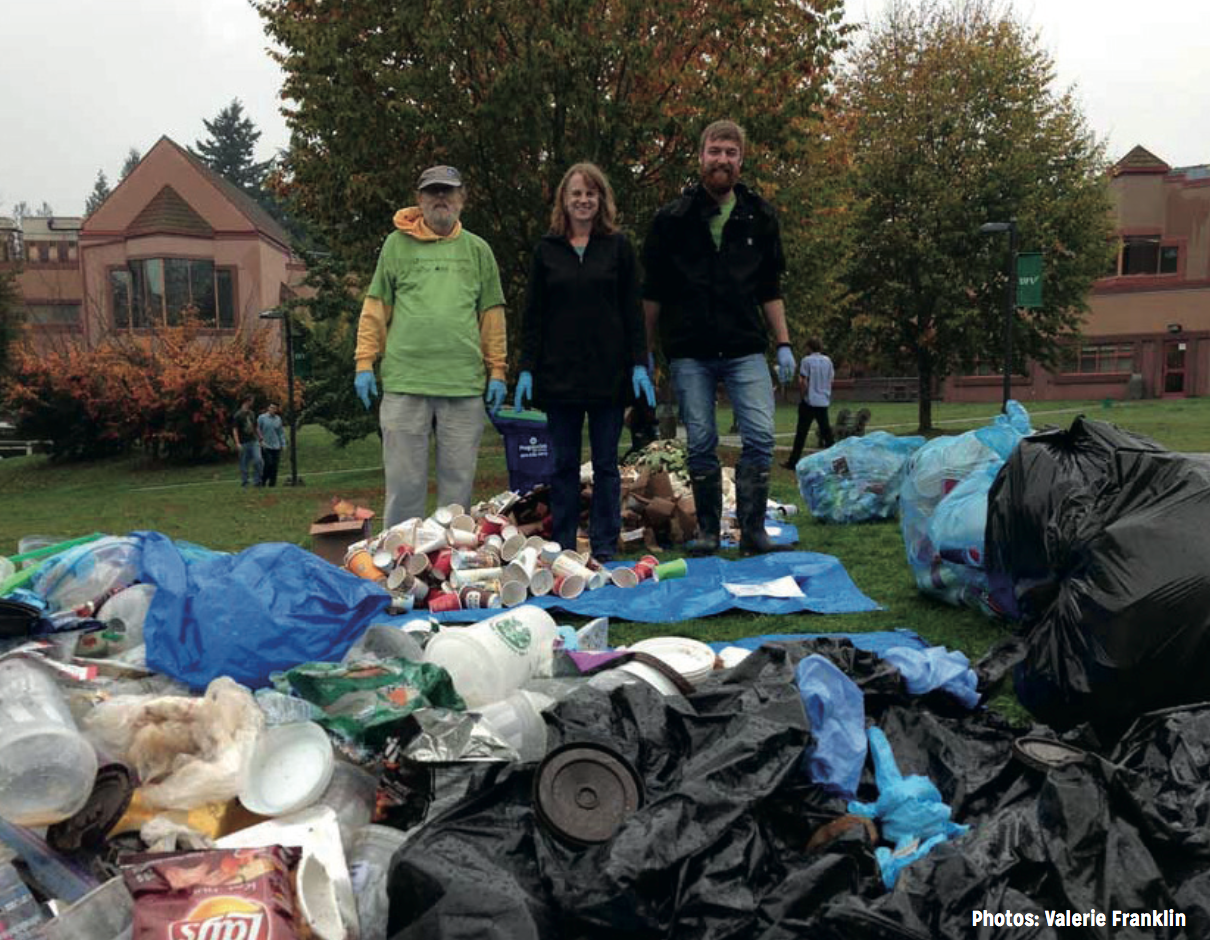By Sonja Klotz (The Cascade) – Email

Buildings change year-by-year at UFV, but how can an institution keep this up while improving its output from an environmental standpoint? This is one of the questions UFV’s Centre for Sustainability has been asking since 2011. Along with facilities and project management staff, they’ve been able to make some headway in terms of reducing the institution’s carbon footprint.
“What you don’t see, and you have to give facilities credit for this, is all the upgrades they are doing in all the buildings,” says Pat Harrison, chair for the Centre for Sustainability, who also instructs in the biology department. “Of course not all the buildings are up to snuff yet, [but] I think, behind the scenes, people don’t realize they have these new sophisticated controls on some of the buildings.”
These controls are meters, some visible in hallways, that help facilities determine the amount of energy used in each building of Abbotsford and Chilliwack campuses. The data collected from them is then added to a monthly report.
“In those reports, we work with Puma Database software — a data gathering tool that’s managed by Prism engineering,” says Mark Goudsblom, director of facilities and project management. “Not every building is separately metered but we’re getting there.”
The goal is to also have a meter for every sub-user — the departments that are estimated to use more energy within a given area of a building. For example, in the Student Union Building, facilities has put a sub-meter at the Canoe as a way to provide the Student Union Society the exact data of how much energy the campus restaurant uses per month.
Overall, UFV’s energy usage has decreased significantly, over 10 per cent since 2011-12.
“I would say that we’ve done a good job on energy reduction,” says Alyssa Bougie, coordinator assistant for the Centre for Sustainability. Bougie points out that UFV surpassed its target for reduction — 10 per cent by 2015, and has decreased energy consumption by an addition seven per cent in the last year alone.
Plans can change drastically when it comes to the budget allocations for green campaigns, advocacy, and awareness building initiatives.
“From my perspective, we are a little behind the game; I think we’re doing really well for what we have,” Harrison says. “We have basically zero budget and we operate with the grace of several components. One of them is the dean of sciences, who has given me a small budget and has given me a release so I can work on it. And facilities definitely, by hiring Alyssa and having a small budget for it.”
The sustainability programs consist of three different components: the GreenSpeak seminar series, campaign initiatives (National Sweater Day, Turn It Off Week), and Green Team events.
One recent campaign initiative was Waste Audit Day.
“We did a waste audit, and we are working now with the agriculture program to see if we can use a composter and divert all of our paper towels to a composting stream that can go out to the composter,” Goudsblom says. “From the full audit they did, there’s about 50 per cent of UFV’s daily waste generation … about 364 lbs.”
Interestingly, only 66 lbs of the audit was considered “true waste,” with 34 lbs of bags mixed in with different plastic items, and 75 lbs of paper towels.
“If we can just take one of those out and divert into the appropriate stream, we can actually have a significant impact on the carbon footprint production,” Goudsblom says. “We are taking a two-fold approach: One is increase composting and compostable materials into the right stream which we’re paying for.” The other part of the approach, Goudsblom says, would involve using the compost as fuel for the agriculture program at UFV.
UFV hired a new energy manager, Blaire McFarlane, at the end of March to oversee energy consumption and monitor the types of energy use that occurs, whether it would be electricity, natural gas, or other forms of energy. That way, there is a professional that is always collecting the necessary data to determine the next goals and steps to reducing energy consumption costs and gas emissions to zero, thus making the institution environmentally and financially sustainable.
Part of the Green Team’s outreach is about building awareness.
“That’s something I think [will be] the focus should be for the next couple of years for the university,” Goudsblom says. “I think we’ve done a lot of the high level stuff, and we continue to do light-fixture changes and LED changes, but I think the more energy awareness we create under students, staff, and faculty as we go through the years will help keep the trend going towards energy savings, and the reduction of carbon neutral gases.”


